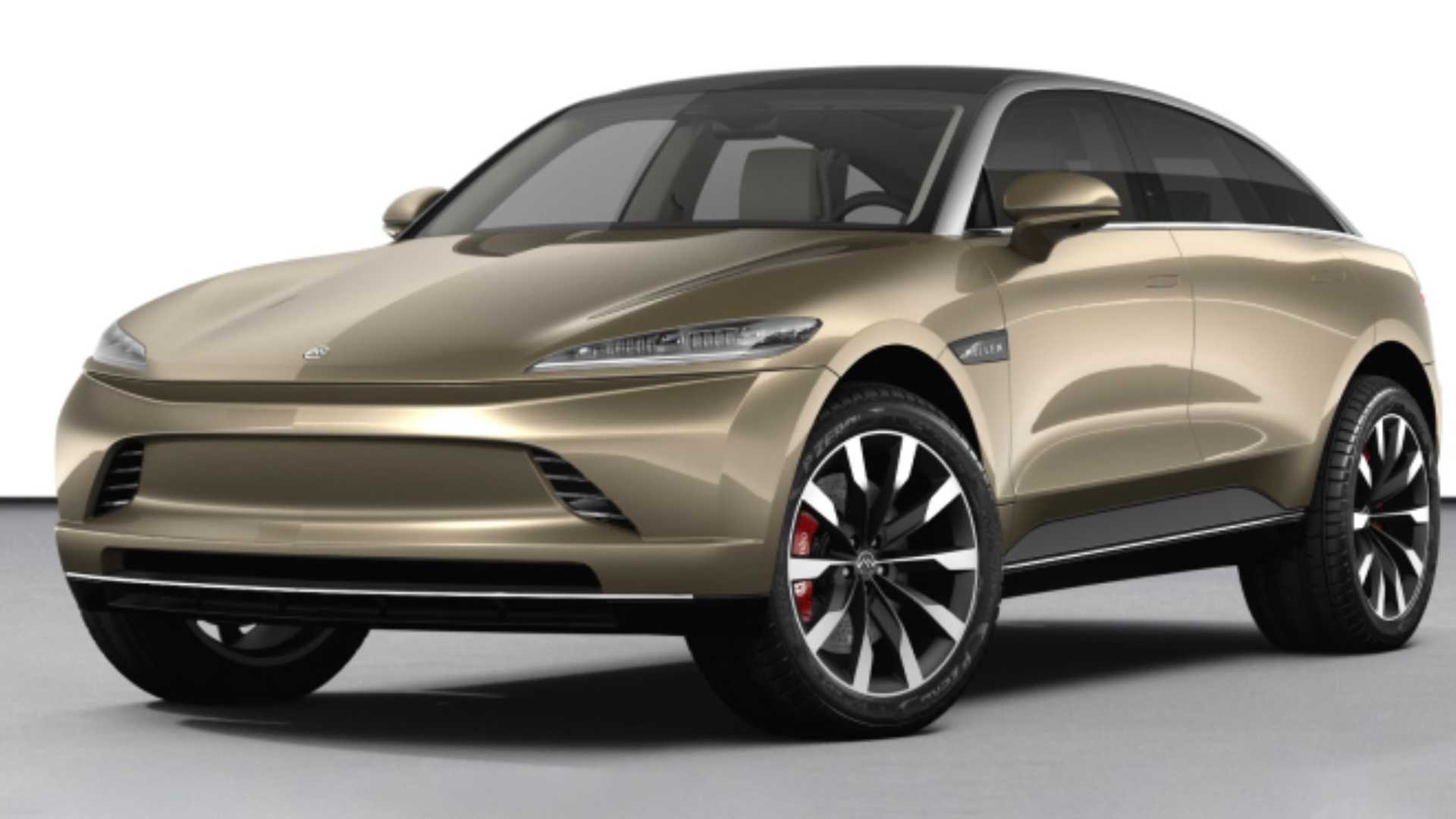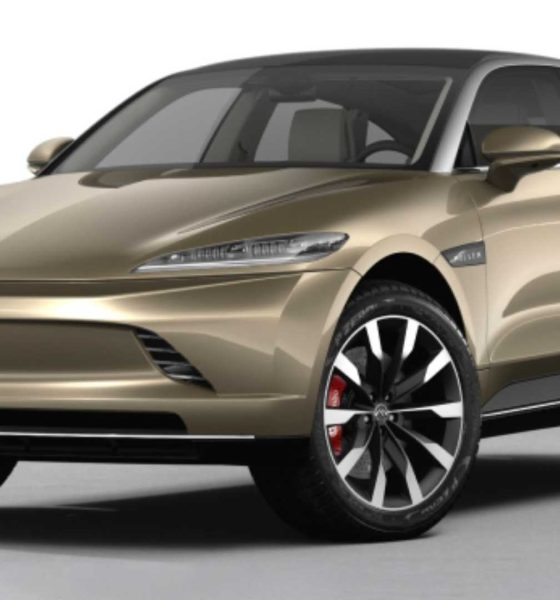

News
Mullen Automotive labeled ‘Another Fast Talking EV Hustle’ in new Hindenburg Research report
Hindenburg Research came out with a new report on Wednesday calling Mullen Automotive “another fast-talking EV hustle,” claiming the up-and-coming electric vehicle startup has “grand promises — and little to back them up.”
Founded in 2014, Mullen has been attempting to build competitive electric vehicles and develop new battery technology that would revolutionize the increasingly-saturated industry. The company’s stock has climbed around 316 percent, according to the report, which has been driven by “retail investor euphoria over bold claims of ground-breaking technology, near term production of its EV vans, and a major as-yet-unnamed Fortune 500 customer.”
A considerable chunk of that growth came recently as Mullen released an update on battery testing, which sent the company’s stock up 145 percent, the report states. “In reality, the “news” appears to be a rehash of testing the company had already announced in 2020,” Hindenburg wrote. The extensive report also questions Mullen’s research and development practices, which have not aligned with what the company has spent investing in developing its products. Hindenburg said Mullen only spent around $3 million in R&D last year, despite the company stating it is on track for commercialization of solid-state batteries within the next 18 to 24 months. Meanwhile, other companies and significant automakers have funneled billions into developing the tech, without much to show for it.
Other claims in the report state that the two electric cargo vans Mullen said it will manufacture are actually Chinese EVs rebranded with a company logo. “Import records show the company recently imported two vehicles from China, one of each model,” the report said.
Additionally, Mullen has major production hurdles to jump over, including EPA certifications and a need for employees.
Mullen shares (NASDAQ: MULN) dropped as much as 8.27 percent this morning after the report was published. Shares were down around 4.4 percent as of 12:51 PM EST. Mullen did not immediately respond to Teslarati’s inquiry for comment.
The automaker is currently developing its introductory EV, the Mullen Five. An all-electric crossover, Mullen estimates the range will be around 325 miles, with a max speed of 155 MPH and 0-60 in just 3.2 seconds.
Earlier this week, Mullen announced the promotion of former Tesla executive John Taylor to its Global Manufacturing and Strategic Planning Head. “John brings a wealth of experience in the EV manufacturing space. He plays a critical role in the ongoing setup and expansion of Mullen’s Advanced Manufacturing and Engineering Center (AMEC) in Tunica, Mississippi,” CEO David Michery said. “John’s international manufacturing experience will come into play as he strategizes and evaluates Mullen’s other domestic and international manufacturing opportunities.”
Hindenburg Research has released numerous short-seller reports in the past, including one with Nikola Motor that turned out to lead to the company’s eventual restructuring. Founder Trevor Milton stepped down, and was indicted on fraud charges late last year.
The full report against Mullen Automotive is available here.
Disclosure: Joey Klender is not a Mullen Shareholder.
I’d love to hear from you! If you have any comments, concerns, or questions, please email me at joey@teslarati.com. You can also reach me on Twitter @KlenderJoey, or if you have news tips, you can email us at tips@teslarati.com.

News
Tesla FSD fleet is nearing 7 billion total miles, including 2.5 billion city miles
As can be seen on Tesla’s official FSD webpage, vehicles equipped with the system have now navigated over 6.99 billion miles.

Tesla’s Full Self-Driving (Supervised) fleet is closing in on almost 7 billion total miles driven, as per data posted by the company on its official FSD webpage.
These figures hint at the massive scale of data fueling Tesla’s rapid FSD improvements, which have been quite notable as of late.
FSD mileage milestones
As can be seen on Tesla’s official FSD webpage, vehicles equipped with the system have now navigated over 6.99 billion miles. Tesla owner and avid FSD tester Whole Mars Catalog also shared a screenshot indicating that from the nearly 7 billion miles traveled by the FSD fleet, more than 2.5 billion miles were driven inside cities.
City miles are particularly valuable for complex urban scenarios like unprotected turns, pedestrian interactions, and traffic lights. This is also the difference-maker for FSD, as only complex solutions, such as Waymo’s self-driving taxis, operate similarly on inner-city streets. And even then, incidents such as the San Francisco blackouts have proven challenging for sensor-rich vehicles like Waymos.
Tesla’s data edge
Tesla has a number of advantages in the autonomous vehicle sector, one of which is the size of its fleet and the number of vehicles training FSD on real-world roads. Tesla’s nearly 7 billion FSD miles then allow the company to roll out updates that make its vehicles behave like they are being driven by experienced drivers, even if they are operating on their own.
So notable are Tesla’s improvements to FSD that NVIDIA Director of Robotics Jim Fan, after experiencing FSD v14, noted that the system is the first AI that passes what he described as a “Physical Turing Test.”
“Despite knowing exactly how robot learning works, I still find it magical watching the steering wheel turn by itself. First it feels surreal, next it becomes routine. Then, like the smartphone, taking it away actively hurts. This is how humanity gets rewired and glued to god-like technologies,” Fan wrote in a post on X.
News
Tesla starts showing how FSD will change lives in Europe
Local officials tested the system on narrow country roads and were impressed by FSD’s smooth, human-like driving, with some calling the service a game-changer for everyday life in areas that are far from urban centers.

Tesla has launched Europe’s first public shuttle service using Full Self-Driving (Supervised) in the rural Eifelkreis Bitburg-Prüm region of Germany, demonstrating how the technology can restore independence and mobility for people who struggle with limited transport options.
Local officials tested the system on narrow country roads and were impressed by FSD’s smooth, human-like driving, with some calling the service a game-changer for everyday life in areas that are far from urban centers.
Officials see real impact on rural residents
Arzfeld Mayor Johannes Kuhl and District Administrator Andreas Kruppert personally tested the Tesla shuttle service. This allowed them to see just how well FSD navigated winding lanes and rural roads confidently. Kruppert said, “Autonomous driving sounds like science fiction to many, but we simply see here that it works totally well in rural regions too.” Kuhl, for his part, also noted that FSD “feels like a very experienced driver.”
The pilot complements the area’s “Citizen Bus” program, which provides on-demand rides for elderly residents who can no longer drive themselves. Tesla Europe shared a video of a demonstration of the service, highlighting how FSD gives people their freedom back, even in places where public transport is not as prevalent.
What the Ministry for Economic Affairs and Transport says
Rhineland-Palatinate’s Minister Daniela Schmitt supported the project, praising the collaboration that made this “first of its kind in Europe” possible. As per the ministry, the rural rollout for the service shows FSD’s potential beyond major cities, and it delivers tangible benefits like grocery runs, doctor visits, and social connections for isolated residents.
“Reliable and flexible mobility is especially vital in rural areas. With the launch of a shuttle service using self-driving vehicles (FSD supervised) by Tesla in the Eifelkreis Bitburg-Prüm, an innovative pilot project is now getting underway that complements local community bus services. It is the first project of its kind in Europe.
“The result is a real gain for rural mobility: greater accessibility, more flexibility and tangible benefits for everyday life. A strong signal for innovation, cooperation and future-oriented mobility beyond urban centers,” the ministry wrote in a LinkedIn post.
News
Tesla China quietly posts Robotaxi-related job listing
Tesla China is currently seeking a Low Voltage Electrical Engineer to work on circuit board design for the company’s autonomous vehicles.

Tesla has posted a new job listing in Shanghai explicitly tied to its Robotaxi program, fueling speculation that the company is preparing to launch its dedicated autonomous ride-hailing service in China.
As noted in the listing, Tesla China is currently seeking a Low Voltage Electrical Engineer to work on circuit board design for the company’s autonomous vehicles.
Robotaxi-specific role
The listing, which was shared on social media platform X by industry watcher @tslaming, suggested that Tesla China is looking to fill the role urgently. The job listing itself specifically mentions that the person hired for the role will be working on the Low Voltage Hardware team, which would design the circuit boards that would serve as the nervous system of the Robotaxi.
Key tasks for the role, as indicated in the job listing, include collaboration with PCB layout, firmware, mechanical, program management, and validation teams, among other responsibilities. The role is based in Shanghai.
China Robotaxi launch
China represents a massive potential market for robotaxis, with its dense urban centers and supportive policies in select cities. Tesla has limited permission to roll out FSD in the country, though despite this, its vehicles have been hailed as among the best in the market when it comes to autonomous features. So far, at least, it appears that China supports Tesla’s FSD and Robotaxi rollout.
This was hinted at in November, when Tesla brought the Cybercab to the 8th China International Import Expo (CIIE) in Shanghai, marking the first time that the autonomous two-seater was brought to the Asia-Pacific region. The vehicle, despite not having a release date in China, received a significant amount of interest among the event’s attendees.








